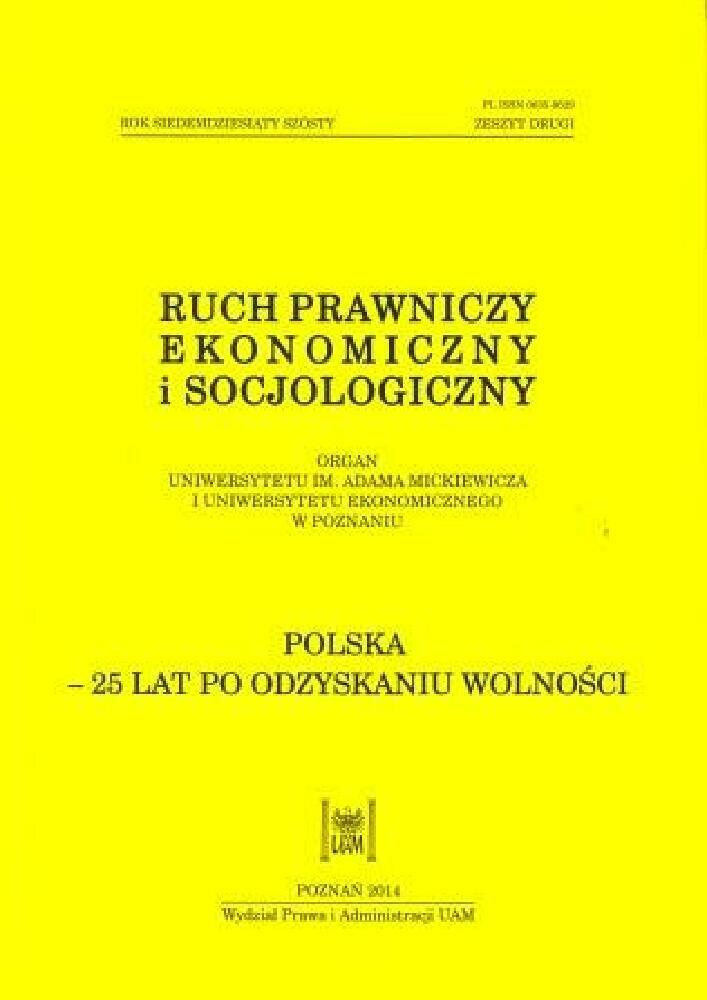Abstrakt
Artykuł przedstawia zmiany systemowe wprowadzone w Polsce po 1989 r., które umożliwiły przejście z gospodarki centralnie sterowanej do wolnorynkowej. Podjęcie głębokich i szerokim reform o charakterze prawnym, gospodarczym i społecznym pozwoliło na ukształtowanie demokratycznego ustroju po wielu latach sprawowania władzy komunistycznej. Transformacja systemowa była możliwa dzięki znaczącym przemianom podstaw prawnych, począwszy od zmian w ustawie zasadniczej, określającej istotę prawa własności i obowiązek jego poszanowania, poprzez uchwalenie innych aktów prawnych koniecznych do zmiany stosunków własnościowych (takich jak ustawy o komercjalizacji i prywatyzacji przedsiębiorstw państwowych, prawa o działalności gospodarczej czy ustawy o gospodarowaniu nieruchomościami rolnymi). Równoległe reformy systemu bankowego oraz polityki pieniężno-kredytowej umożliwiły napływ kapitału zagranicznego i pozwoliły na rozwój prywatnej przedsiębiorczości. W wyniku przemian ustrojowych, jakie zaszły w ostatnich 25 latach, Polska jako demokratyczne państwo prawa jest członkiem Unii Europejskiej, a polska gospodarka rynkowa staje się coraz bardziej konkurencyjna. Niestety, mimo głębokich przekształceń w sferze własnościowej, Polska przez ostatnie ćwierćwiecze nie rozwiązała kwestii zwrotu prawowitym właścicielom własności przejętej bezprawnie przez władze komunistyczne.
Bibliografia
Bolkowiak I., Polski system podatkowy w okresie transformacji ustrojowej (lata 1989-1996), Warszawa 1998.
Fiszer J., Reforma podatkowa w Polsce, Warszawa 1991.
Kosikowski C., Zasady ustroju społecznego i gospodarczego w procesie stosowania Konstytucji, Warszawa 2005.
Leszczyński L., Zagadnienia teorii stosowania prawa. Doktryna i tezy orzecznictwa, 2001, admisum.files.wordpress. com/2010/.../zarys-teorii-i-filozofii-prawa-1 [dostęp: 18.02.2014].
Wronkowska S., Ziembiński Z., Zarys teorii prawa, Poznań 2001.
Zamierzenia rządu w realizacji planu konsolidacji gospodarki narodowej i budżetu państwa na rok 1989, Finanse 1989, nr 1: 3-5.
Licencja
Prawa autorskie (c) 2014 WPiA UAM

Utwór dostępny jest na licencji Creative Commons Uznanie autorstwa – Użycie niekomercyjne – Bez utworów zależnych 4.0 Międzynarodowe.




